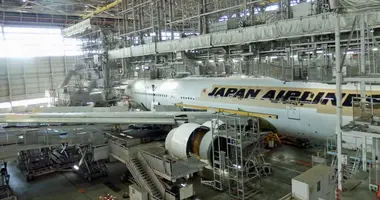Great Kanto Earthquake Museum
The Great Kanto Earthquake Museum in Yokoamicho Park in Ryogoku, Tokyo is dedicated to the victims of the Great Kanto Earthquake of 1923.
Great Kanto Earthquake Museum 復興記念館 (横網町公園)
Marshall Hughes
 Great Kanto Earthquake Museum, Ryogoku, Tokyo
Great Kanto Earthquake Museum, Ryogoku, Tokyo
If you have seen the major Tokyo museums and are looking for one of Tokyo's smaller, less crowded museums, you should consider the Great Kanto Earthquake Museum (Fukko Kinenkan; 復興記念館).
It is located in Yokoamicho Park, a six-minute walk from the Kyogoku Kokugikan Sumo Stadium in the Ryogoku district of Tokyo.
 Exhibits, Great Kanto Earthquake Museum, Ryogoku, Tokyo
Exhibits, Great Kanto Earthquake Museum, Ryogoku, Tokyo Great Kanto Earthquake Museum, Ryogoku, Tokyo
Great Kanto Earthquake Museum, Ryogoku, Tokyo
History
The Great Kanto Earthquake, called the Kanto Daishinsai (関東大震災) in Japanese, occurred on September 1, 1923. It killed an estimated 142,800 people, destroyed some 570,000 homes and left around 1.9 million people homeless. Estimates on its duration range from four to 10 minutes.
The museum contains exhibits and large photos which show the devastation of Tokyo. The main attraction of the earthquake museum is the large pictures hanging on the walls, but there are also objects damaged from the fire, including a burned English-language typewriter.
There is some signage in English, although having a Japanese friend along would be helpful.
There is an interesting display showing how much aid various countries gave in assistance. The Americans gave the most at almost 31 million yen. Next were the British at 5.8 million yen followed by the Chinese at 2.6 million yen.
At the other end of the scale are the Turkish who donated 194 yen and the Romanians who contributed 75 yen to the rebuilding of Tokyo. These figures are, it may safely be assumed, not adjusted for inflation.
The Earthquake Museum is located in a two story-building, the first floor being the Earthquake Museum and the second floor having artifacts pertinent to The Great Tokyo Air Raid of March, 1945.
The second floor is barely worth 10 minutes of your time because of its lack of interesting objects and much in the way of English explanations.
 People fleeing Tokyo after the earthquake of 1923, Great Kanto Earthquake Museum, Ryogoku, Tokyo
People fleeing Tokyo after the earthquake of 1923, Great Kanto Earthquake Museum, Ryogoku, Tokyo Kyogoku Kokugikan Sumo Stadium after the earthquake of 1923, Great Kanto Earthquake Museum, Ryogoku, Tokyo
Kyogoku Kokugikan Sumo Stadium after the earthquake of 1923, Great Kanto Earthquake Museum, Ryogoku, Tokyo
The museum is located near the former Yasuda Gardens, the Edo Tokyo Museum and the Kyogoku Kokugikan Sumo Stadium, all sites that you should see if you are in the area.
At the time of the earthquake, what is now Yokoamicho Park was an open area that people were told to go to as a safe haven from the fires that were burning out of control. After thousands had gathered there, a great wall of fire engulfed the area and an estimated 38,000 people perished here.
Tokyo was badly damaged by an earthquake, then left in ruins by ensuing fires. The city was extremely vulnerable to fire, especially in the downtown area where the wooden houses were built closely together.
In fact, the population density of Tokyo's 23 wards was then twice what it is today. Some 134 separate fires broke out after the earthquake, and the last was not extinguished for 40 hours.
The museum is not large by any means, and doesn't take a long time to go through. Still, it is an interesting and worthwhile outing if you find yourself in that part of Tokyo.
 The aftermath of the Great Kanto Earthquake in Tokyo
The aftermath of the Great Kanto Earthquake in Tokyo
Access
Great Kanto Earthquake Museum
Admission: Free.
Hours: 9 am to 5 pm, with last admission at 4.30 pm.
Closed: Mondays and year-end holidays.
Tel: 03 3622 1208
From the Ryogoku Station on the Oedo Line, take exit A-1. Turn left when you come out of the station. Walk 100 meters, and the museum is on your left, inside Yokoamicho Park.
From the Ryogoku Station on the JR Sobu Line, take the West (Nishi) exit. Walk past the Sumo Stadium. Turn right at the second light. Go straight one block. Cross the street and Yokoamicho Park is on your left. See the map of the park just inside the entrance to find the museum.





























